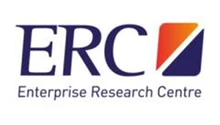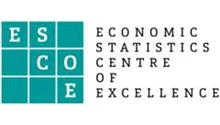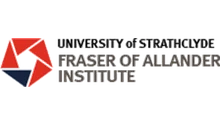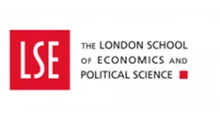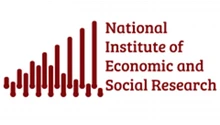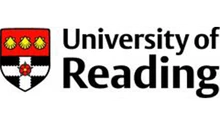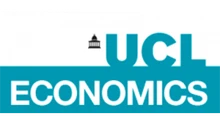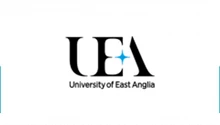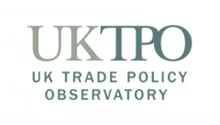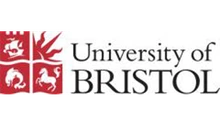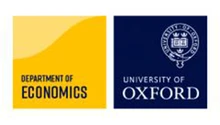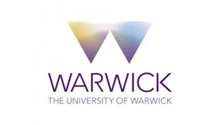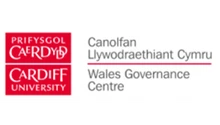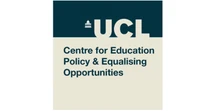Russia’s full-scale invasion of Ukraine has triggered the largest refugee crisis in Europe since World War II, with nearly six million Ukrainians displaced worldwide. This creates a critical challenge looking ahead to post-war reconstruction. With over 200,000 Ukrainians currently here in the UK, policy-makers must consider both the current needs of refugees and how the diaspora can help to support economic recovery in Ukraine.
Russia’s full-scale invasion of Ukraine in February 2022 has driven millions to seek safety and stability abroad. Since the start of the conflict, nearly six million Ukrainians have been registered as refugees worldwide, most of them in Europe.
Three years on, many Ukrainian refugees have had time to learn new languages and integrate into their host communities. As a result, intentions to return have declined sharply. In the UK, 68% of adults now say they would like to remain even if it becomes safe to return to Ukraine, up from 52% the previous year.
This scenario presents a dual challenge for Ukraine: supporting those who choose to return by leveraging their new skills and knowledge, while also finding ways to engage the growing number of refugees who remain abroad.
Migration as a driver of knowledge
A growing body of research shows that forced migrants can act as powerful catalysts for knowledge-transfer, bringing skills, connections and innovation back to their home countries. Returning migrants often play a key role in economic development. For example, research shows that Yugoslavian refugees who gained work experience in Germany boosted exports in the same sectors upon returning home. Similarly, there is evidence that Albanian returnees leveraged skills acquired abroad to drive entrepreneurial activity.
Populations living away from their home country – known as ‘diasporas’ – contribute to economic development in lots of different ways. For example, they can support innovation and productivity through cross-border knowledge flows and co-patenting, often acting as conduits for ‘knowledge remittances’. They expand exports, reduce transaction costs, and facilitate investment by acting as intermediaries for foreign direct investment, leveraging leadership positions in international firms and mobilising professional networks.
The huge migration wave: Ukrainian refugees
With the escalation of Russian aggression on 24 February 2022, Ukrainians were forced to decide whether to stay or seek safety abroad. Beyond the human cost of the war, the conflict has not only battered the economy but also had a huge impact on the workforce. Millions have been displaced, injured or killed, leaving a large portion of the labour market unable or unwilling to work. Currently, nearly 6 million Ukrainians are registered as refugees globally, with another 3.7 million displaced internally. Together, they accounted for more than one-fifth of the population in 2021.
By the end of August 2025, around 4.3 million refugees from Ukraine had registered for temporary protection in the European Union (EU). Germany and Poland host the largest numbers, with each country accommodating over one million displaced people. The UK ranks fourth, providing refuge to over 220,000 Ukrainians in 2025 (Figure 1).
Figure 1. Top 10 countries with the highest number of Ukrainian refugees in Europe, 2025
Source: LSE Growth Lab elaboration using UNHCR data.
Note: Last update June 2025.
Surveys of refugees abroad indicate that Ukrainian refugees displaced by the full-scale invasion have a distinct demographic profile: 58% are women and 30% are children under the age of 18. Broadly speaking, fighting-aged men have stayed behind as required by martial law restrictions.
The refugee population is also well-educated: 74% hold higher or incomplete higher education qualifications (CES, 2025). Ukrainian refugees demonstrate higher educational attainment compared to the general Ukrainian population and other refugee groups.
They also have a strong employment background, with 70% reporting prior work experience before the invasion. Perhaps partly because of this, refugee employment rates abroad have increased significantly, from 42% in 2022 to 56% in 2024 (though outcomes vary widely by host country). Even so, only 39% of employed refugees have been able to work in their original fields (CES, 2025), highlighting ongoing challenges in labour market integration.
The demographic profile of refugees in the UK closely mirrors that in other host countries, with notable characteristics including a high proportion of women (64%) and a high share of individuals with a degree (Figure 2). The Ukrainian people here in the UK also have a high employment trajectory. Ukrainians who are employed reached 69% by 2024 according to survey data, up from 52% in 2023 (though 66% work in different sectors than in Ukraine). Language barriers remain the primary employment obstacle, with 50% citing English requirements as a key challenge (ONS, 2024).
Figure 2. Ukrainian VISA holders in the UK by educational level
Source: LSE Growth Lab elaboration using ONS Visa holders survey data for April 2024
As it stands, 68% of adult refugees from Ukraine express the wish to remain living in the UK in a future in which it is safe to return home, up from 52% the year before (ONS, 2023). This figure exceeds other countries, where about 40% of Ukrainians express a desire to return (CES, 2025). The main reasons are: they have more opportunities to work in the UK, they feel like they have built a life here, and they believe their quality of life has improved (Figure 3). Many (52%) also cite having a job in the UK as a key reason for wanting to stay.
Figure 3. Factors to remain in the UK
Source: LSE Growth Lab elaboration using the ONS Visa holders survey data for April 2024
What does previous research tell us about return policies?
Analysis of previous conflicts and refugee returns highlights two crucial factors: low levels of return and the decisive role of timing. Indeed, UNHCR data covering 53 post-conflict cases between 1989 and 2008 show that even a decade after conflicts ended, only one-third of refugees had returned. The return rate also tends to peak within the first five years after the conflict, and most returns occur spontaneously rather than through formal programmes.
Refugees themselves are the main drivers in deciding when and how to return. Individual characteristics, like age, gender and cultural identity, also play a role. Young people tend to be less attached to their home country, while women and children often prioritise access to education and healthcare. Those who do return frequently settle in urban areas rather than their rural hometowns, seeking better economic opportunities and public services – a trend that places additional pressure on urban planning and infrastructure.
Security remains a fundamental factor in return decisions, but sustainable reintegration also depends on access to economic opportunities, essential services (education and healthcare), adequate housing and viable livelihoods.
Family and community networks are also important. Many displaced families send some members ahead to assess local conditions, reclaim property and prepare for a permanent move. Emotional and familial connections remain powerful motivators, while trusted social networks provide critical information about safety, services and job prospects.
Decisions to stay or return often hinge on a comparison between living conditions in the host country and those at home. Refugees who have secured stable employment and integrated economically in host countries are generally less inclined to repatriate.
Finally, return migration is rarely a one-time event. It is a complex and often temporary process involving repatriation, reintegration, rehabilitation and reconstruction. This highlights the fluid and non-linear nature of return migration, which is better understood as part of a broader continuum of mobility rather than a final resettlement.
What can we learn from past experiences on diaspora engagement?
From past waves of migration to today’s movements, several countries have faced similar challenges to the ones Ukraine now confronts. Three cases show how different paths can lead to the same goal: turning migration into a force for development.
Bosnia
The Bosnian War (1992–1995) displaced 2.2 million people, offering striking parallels to today’s Ukrainian refugee crisis. Europe’s host countries took sharply different approaches, shaping refugees’ long-term outcomes. Germany issued short-term permits with limited integration support and denied residency after the 1995 Dayton Agreement. This prompted most refugees to return: fewer than 10% remained a decade later. In contrast, countries like Denmark and Sweden granted permanent status, enabling smoother integration and long-term settlement. Their ‘look and visit’ programmes, which allowed refugees to assess conditions at home before deciding whether to return, offer a useful model for the UK as it plans for future returns of Ukrainian refugees.
Even after return policies were implemented, Bosnia continued to face emigration pressures driven by limited economic opportunities. The government has recently turned to its diaspora as a source of investment and knowledge exchange, and some successful policies (Diaspora4Development and Diaspora Invest) stand out as good examples for Ukraine.
The Baltic States
The Baltic states – Estonia, Lithuania and Latvia – provide more valuable lessons on managing large-scale emigration. Since joining the EU in 2004, these former Soviet countries have faced steady population outflows driven by limited domestic opportunities. Over time, they have moved beyond return migration and talent-attraction schemes to adopt dual strategies that combine long-term diaspora engagement with targeted return initiatives.
For Ukraine, the Baltic experience is both inspiring and cautionary. EU accession brought new opportunities but also accelerated outward migration. Persistent low productivity has left these countries facing demographic decline and labour shortages. Their experience underscores the need for a balanced migration strategy from the outset: one that supports reintegration while maintaining strong, lasting ties with Ukrainians abroad.
Albania
Finally, Albania offers another valuable model for Ukraine to learn from. As a non-EU country with one of the highest emigration rates, it has developed a strong legal and institutional framework to engage its diaspora. These policies promote both temporary and permanent returns, and channel migration into national development through investment and skills transfer.
Albania’s case is particularly relevant as Albania faces re-migration and the return of vulnerable groups due to limited opportunities. Its inclusive approach, offering career counselling, job-matching and vocational training, illustrates the importance of addressing returnees’ challenges as part of a long-term migration strategy.
What should Ukraine do?
All this points to a set of policies the Ukrainian government can promote to address future reconstruction and the shortage of human capital. It is not just about bringing people back, it is about connecting, understanding and engaging with the diaspora. Such a strategy will require not only a range of policies but also a shift in mindset, recognising those who left as key contributors in Ukraine’s post-war redevelopment.
It is also important to recognise that migration is circular and requires multi-dimensional services supported by clear institutional frameworks at both national and local levels.
This, however, cannot be achieved without economic growth. Long-term reintegration depends not only on access to housing, infrastructure and essential services such as education and healthcare, but also on the creation of stable, well-paying jobs. The most effective way to encourage diaspora return and lasting engagement will be by strengthening Ukraine’s domestic economy.
What is the role of the UK?
The UK also has a vital role in supporting Ukraine. The large number of refugees (many highly qualified and predominantly women and children) currently living here in the UK are also themselves key partners of support.
To assist refugees, the UK should focus on offering certainty. Automatic visa extensions or longer visa periods would help people address challenges such as securing long-term housing or permanent employment. Many children who arrived three years ago are now entering university without sufficient visa coverage to plan their futures. Another way to support Ukraine is by enabling refugees to develop professionally in the UK, accessing good job opportunities. Current mismatches between refugees’ skills and available opportunities highlight the challenges they face in finding work that matches their expertise.
Currently, Ukrainians in the UK lack a clear route to permanent residency – despite 68% expressing a desire to settle long-term. Existing visas do not count toward the five-year residency requirement for indefinite leave to remain, creating uncertainty about their future. With 27% of refugees being children who have already spent a significant part of their lives in the UK, establishing clear and accessible pathways to permanent residency is essential. Providing timely information and options would offer these individuals much-needed certainty and stability.
Finally, once the war ends, the UK should implement flexible visa regimes to accommodate cyclical movement. Policies similar to Denmark and Sweden’s ‘look and visit’ programmes from the Bosnian context could allow multiple entries and extended stays. Establishing dedicated return centres would then provide comprehensive support and guidance for those reintegrating in Ukraine, ensuring a smoother and more sustainable transition.
Where can I find out more?
- War in Ukraine: Global Conflict Tracker of the Council on Foreign Relations.
- Ukraine refugee situation: Data from UNHCR.
- Ukraine in numbers: Overview from the World Bank.
- Ukrainian refugees after three years abroad. CES 2025 survey.
- Visa holders living in the UK under the Ukraine schemes: Data from ONS.
- International mobility as a development strategy: Albania Country Report: A World Bank analysis of the diaspora strategy in Albania.
- What's the global economic impact of Russia's invasion?: ECO article.
Who are experts on this question?
- Dany Bahar – Center for Global Development, Harvard Growth Lab
- Anna Dezyk MBE – Association of Ukrainians in Great Britain (AUGB)
- Yuriy Gorodnichenko – University of California, Berkeley
- Ricardo Hausmann – Harvard Growth Lab
- Ljubica Nedelkoska – Complexity Science Hub
- Olga Tokariuk – Chatham House







